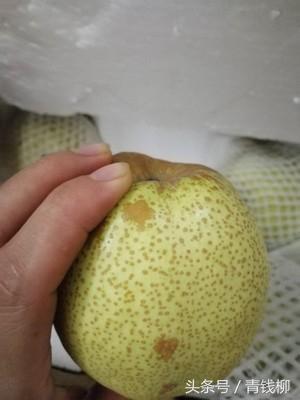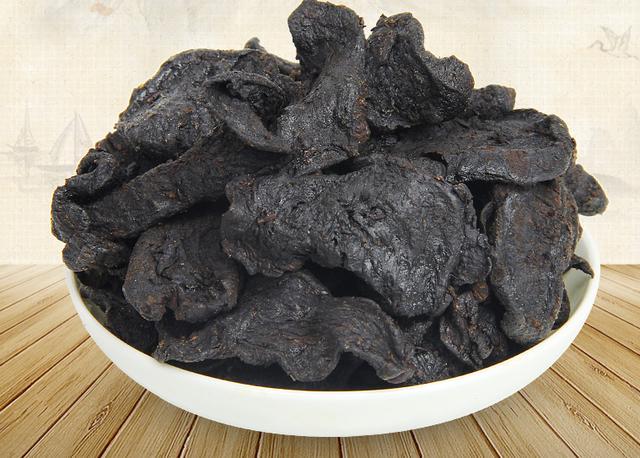Performance of Cuiyu Pear Grafted with Dangshansu Pear and Its High-yielding Cultural Techniques

Performance and High-yield cultivation techniques of Cuiyu Pear grafted with Dangshan Pear
The Horticulture Field of the Old Road of the Yellow River in Xiao County, Anhui Province is located at the junction of northern Anhui and Xuzhou, Jiangsu Province. the main pears are Dangshan pear, Fengshui pear, golden pear and other middle and late ripening varieties. The soil fertility of the pear orchard of Sandui Pear Garden in the Old Road of the Yellow River is medium, and it is a tidal soil with a pH value of 7.4. the local climate belongs to the temperate monsoon climate, with an annual average temperature of 14.6 ℃, precipitation of about 850 mm and a frost-free period of 230d. The garden has a 10-year-old Dangshan pear with a row spacing of 4 m × 6 m, a small crown sparse layer structure and a high level of management. In order to optimize the variety structure of pear, the annual branches of Cuiyu pear were introduced from the Institute of Horticulture of Zhejiang Academy of Agricultural Sciences at the beginning of 2010 and grafted on ten-year-old Dangshan pear in March. Through observation, the variety shows strong adaptability, high yield, stable yield, early fruit, early ripening, smooth fruit surface and high quality, and has a good development prospect. The performance and key points of cultivation and management of Cuiyu pear are introduced as follows.
1 method and performance of high connection
1.1 High connection method
At the beginning of February, the growing branches with strong growth, no disease and insect pests and full bud eyes around the crown of Cuiyu pear were selected as scions, the shrunken buds at the tip and base were cut off, bundled and placed in a cool place, and covered with wet sand. The Dangshan pear tree sawed off the central leading trunk to become happy before the height grafting, and made use of the original skeleton of the first layer as far as possible, selecting 3 to 5 main branches, 1 to 2 lateral branches for each main branch, 2 beat 3 for the main branch and 3 thumb 4 for the side branch, and all the other big branches and upper dorsal branches were removed and the branchlets on both sides were retained. When the rootstock was high grafted, the top of the main side rootstock was split or cut, and the middle and lower parts were split on the remaining branchlets every 10: 20 cm (20: 40 cm on the same side). Ventral grafting was used in the parts without branchlets. Take 1 to 2 full buds for each scion, the knife sharp mouth is flat, and the cambium is aligned. After grafting, the grafting site and scion were tightly wrapped with plastic film. After high grafting, the new shoots with hidden buds will be wiped out except for leaving branches to be grafted. When the new shoots grow to about 30 cm, they will be bound in time to prevent wind break. The plastic film at the interface was released in time in late July to avoid ring hanging.
1.2 performance
1.2.1 Botanical characteristics. Cuiyu pear tree is strong, the tree posture is erect, the branches are strong, and the flower buds are easy to form. Leaf blade dark green, spreading ovoid, leaf pointed, leaf base rounded. The twigs are green, grayish brown when mature, there are no tomentose on the surface of the shoots, each inflorescence has 5-8 flowers, the petals are overlapping, pure white, and the self-flowering fruit setting rate is low.
1.2.2 phenological phase. It sprouts in the middle of March, blossoms in the last ten days, blossoms in the first ten days of April and thanks in the middle of April. The flowering period is about 15 days. The harvest maturity period is early July, the full maturity period is mid-late July, and the fruit development period is about 100 days. The leaves began to fall in early November and entered the dormant period.
1.2.3 growth and fruiting habits. The tree potential of this variety is strong and the tree posture is erect. The long fruit branch has good fruiting performance, the flower bud is easily formed, and the fruit setting rate of artificial pollination is high. The branches of the same year are pulled in summer to form axillary flower buds, and the fruit begins to bear fruit in the second year, and the early fruit is highly productive.
1.2.4 Economic traits. The fruit of Cuiyu pear is nearly round, with an average weight of 320 g and a maximum weight of 650 g. The pericarp is light green, the fruit surface is smooth, there are basically no spots, the fruit spot is small and sparse, and the calyx falls off. The flesh is white, the flesh is tender, the heart is small, the edible rate is 96%, the stone cells are few, and the content of soluble solids is 12%-14%. The variety has strong adaptability, high yield and stable yield. under the condition of good management, the annual fruit phenomenon is not obvious.
2 high-yield cultivation and management techniques
2.1 Flower and fruit management
Cuiyu pear is very easy to form flower buds, the fruit setting rate is high, physiological fruit drop and pre-harvest fruit drop is not obvious, attention should be paid to the reasonable adjustment of load, thinning flowers and fruits is particularly important. Flower thinning occurs from inflorescence separation to full flowering, and one inflorescence is retained at an interval of 20 cm. Each inflorescence removes the central flower and the flowers near the center, retaining the robust flowers in the second and third positions of each inflorescence. Weak branches leave fewer flowers, strong branches leave more flowers. Artificial pollination was carried out at full flowering stage. Fruit thinning 7-10 days after flowering, generally leaving one fruit at 25 cm interval, excluding dense fruit, Chaotian fruit, disease and insect fruit, deformed fruit and tip fruit. After setting the fruit, spray insecticide and fungicide once, start bagging and finish within 3-5 days. After bagging, combined with spraying, 0.3% calcium nitrate and 0.3% borax were applied to prevent calcium deficiency in fruits.
2.2 soil, fertilizer and water management
After fruit harvest, nitrogen fertilizer and nutrients were applied to restore the tree potential quickly and prepare for overwintering. Increase the application of organic fertilizer in autumn, apply 40 kg/ organic fertilizer and 2 kg/ potassium sulfate compound fertilizer, dig ditch or spread. Topdressing at least twice a year, mainly applying nitrogen fertilizer before flowering, applying urea 2 kg/ plant (for example, tree potential is weak, then applying nitrogen, phosphorus and potassium compound fertilizer 1.5 kg/ plant after anthesis), and applying nitrogen, phosphorus and potassium compound fertilizer 3 kg/ plant + urea 1 kg/ plant during fruit expansion. The mixture of 0.3% urea and 0.3% potassium dihydrogen phosphate was sprayed in combination with spraying during the growing season. If it is dry before sprouting, after flowering and before wheat harvest, water it in time to keep the soil moist and promote fruit growth. Timely ploughing and weeding, soil moisture conservation, fertilizer conservation and water conservation to ensure the healthy growth of trees.
2.3 Disease and pest control
The main diseases and insect pests in Gaojie Cuiyu pear orchard are pear scab, ring disease, pear planthopper, pear yellow powder, aphids, pear heart borer and so on. Combined with winter pruning, the branches of diseases and insect pests are centrally burned or buried deeply. Scrape off the old warped skin of the trunk and paint the trunk white. Do a good job in clearing the garden, remove withered branches and fallen leaves, diseased fruits, etc., eradicate the source of overwintering diseases and pests, and reduce the overwintering insect population density. Control pear planthopper, aphids and pear heart borer when pear buds germinate. Spray 3 °5 °B é stone sulfur mixture before pear buds germinate, and pay attention to spray through the trunk branches without leaving dead angles. Pest control can also spray 10% imidacloprid 2000 times and 5% cypermethrin 1000 times. After anthesis, spray 10% imidacloprid 2000 times, spray 80% Dasheng MUE 45800 times, 70% methyl topiramate 800 times + 5% cypermethrin 1000 times, 2.5% kungfu EC 1500 times, 20% thiazuron 3 1500 times, Yibao 100 times, etc., spray every 10 to 15 days, all kinds of pesticides and fungicides should be used alternately.
2.4 shaping and pruning
The growth of Cuiyu pear tree is vigorous, the tree posture is more open, it is easy to blossom, mainly with medium and short fruit branches, and the tree is easy to weaken. After planting, the young trees should adopt the happy shape of single stem deformation, with a fixed stem height of 60 cm, a central leading stem in the 2nd and 5th year, 3 main branches in the first layer, 3 main branches in the second layer, the layer spacing of 1.0 m and 1.2 m, and the tree height should be controlled at about 2 m. The opening angle of the main and lateral branches was 45 °to 50 °, mainly by light cutting and long cutting. After the sixth year, with the thickening of the main and side branches and the increase of branches, the main and side branches of the second layer were gradually retracted and pruned until they were thinned, making the tree shape into a single-layer happy shape, improving the ventilation and light transmission conditions in the crown and improving the fruit quality. In the early stage of winter pruning, the crown of the high grafted Cuiyu pear tree was mainly expanded, and all the other branches were thrown except for the extension branches of the backbone branches. Strong branches with space can leave hidden buds heavy and truncated, promote the development of mediocre branches, and then properly remove overdense branches. Results after continuous fruiting, the branch group was easy to weaken, and the internal chamber branch was easy to die and form baldness, which should be retracted and renewed in time. The medium and short fruit branches and short fruit branches in the fruit branch group were carefully pruned to prevent the fruit site from moving out. Properly truncated branch group renewal is beneficial to the formation of medium and short fruit branches and the culture of fruiting branch groups, and to maintain high and stable yield.
- Prev

Technology of large-scale production of prepared slices of Rhizoma Polygonatum
The technology of large-scale production of sliced wine yellow essence function and indications: tonifying blood and nourishing yin, tonifying essence and filling marrow. For blood deficiency, palpitation, irregular menstruation, bleeding, yin deficiency of liver and kidney, sore waist and knees, bone steaming hot flashes, night sweats and spermatorrhea.
- Next

New Technology of Flower and Fruit thinning in Apricot
The new technology of apricot flower thinning and fruit thinning apricot has the characteristics of fast growth, early formation, early fruit, early income and so on. in recent years, the planting scale has expanded year by year, especially in the comprehensive ecological park near the suburbs of the city.
Related
- Wuhan Hospital Iron Tree Blooming Result Was Instantly Frightened by the Gardener Master
- Which variety of camellia is the most fragrant and best? Which one do you like best?
- What is the small blue coat, the breeding methods and matters needing attention of the succulent plant
- Dormancy time and maintenance management of succulent plants during dormancy
- Minas succulent how to raise, Minas succulent plant pictures
- What are the varieties of winter succulent plants
- How to raise succulent plants in twelve rolls? let's take a look at some experience of breeding twelve rolls.
- Attention should be paid to water control for succulent plants during dormant period (winter and summer)
- Watering experience of twelve rolls of succulent plants
- Techniques for fertilizing succulent plants. An article will let you know how to fertilize succulent plants.

